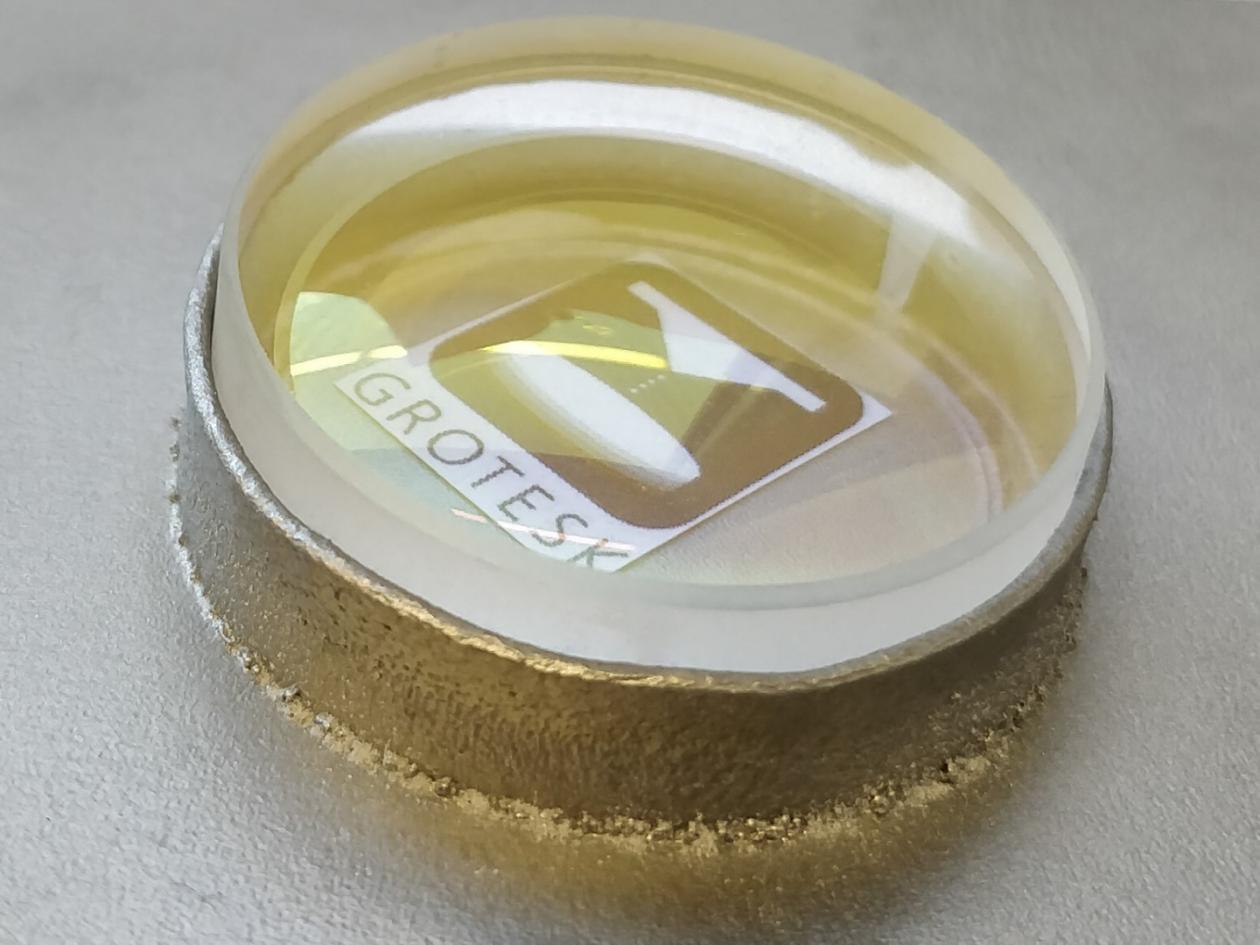Lasers out of the 3D printer: The future of optical manufacturing begins in Niedersachsen
On November 19th, 2019, in Hannover, Niedersachsen presented "GROTESK - the future of optics manufacturing". The four partners in the innovation network "GROTESK - Generative Production of Optical, Thermal and Structural Components" presented research approaches with which optical systems can be manufactured in completely different ways in the future.
Manufacturing optical systems using 3D printing – this is the goal of the team of the Gottfried Wilhelm Leibniz Universität Hannover (LUH), the Clausthaler Zentrum für Materialtechnik (CZM), the Hochschule Hannover - University of Applied Sciences and Arts (HsH) and the Laser Zentrum Hannover e.V. (LZH). "Today, we will hear from the partners of the GROTESK project which applications can arise from this exciting field of research," said Dr.-Ing. Stefan Kaierle, project manager of Niedersachsen ADDITIV and Executive Director at the LZH when he welcomed the approx. 80 guests.
Then, the deputy project manager, Dr.-Ing. Gerrit Hohenhoff, introduced Niedersachsen ADDITIV, which offers a wide range of events in addition to research, development and consulting for small and medium-sized enterprises (SMEs).
Digitization challenges optics manufacturing
"Innovation happens in our heads. I am delighted to see many young guests here today ", said the coordinator of the consortium, Prof. Dr.-Ing. Roland Lachmayer (LUH). GROTESK is researching how optical systems can be digitally constructed and converted into real assemblies by means of Additive Manufacturing. The researchers can already print internal structures for improved cooling of a laser. With a digital twin, the team at the LUH simulates the thermomechanical properties of a 3D component and can thus model the manufacturing process in advance. More efficient cooling systems enable higher output powers without thermal losses - a prerequisite for more powerful laser systems.
Material properties are the key
"We have to choose materials wisely and adjust properties such as the melting point and the surface properties," emphasized Prof. Dr.-Ing. Volker Wesling (CZM). The CZM attaches particular importance to both the connection during the direct printing of a material on an optical component and to the resulting thermal influences. The high thermal load in this process can lead to increased tensions, which sometimes lead to the breakage of the optics. However, this can be prevented with adapted material systems.
Flexible and applicable machine concepts
Optical systems often consist of different types of materials. "We print metal, glass and polymers and would like to be able to change the materials with little effort," explained Prof. Dr.-Ing. Henning Ahlers (HsH) the challenge to the system technology. The solution: A coaxial laser deposition welding head that splits the laser beam and rejoins it later. In this way, the component can be processed independently of the direction, and the different materials can be fed flexibly and automatically.
Laser out of the 3D printer
"We are still a long way from automated laser production. But the concepts presented today make a major contribution to our ability to automate many systems in the future." said Dr. Dietmar Kracht from the LZH. The LZH team is already able to directly print optics into a medium in a tension-free way. This process can be automated, saving a manual step in laser assembly. In the future, GROTESK intends to digitally construct and print entire laser systems.
During the breaks in the showroom, the guests informed themselves about the research works and first results of GROTESK and made new contacts during the technical discussions.
There are four figures for this press release.

